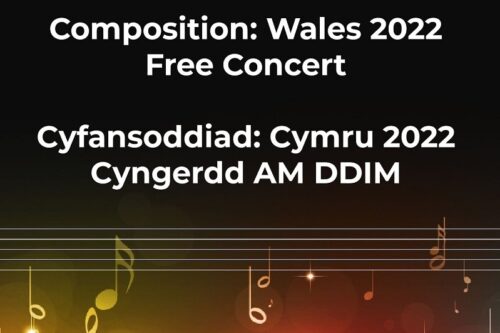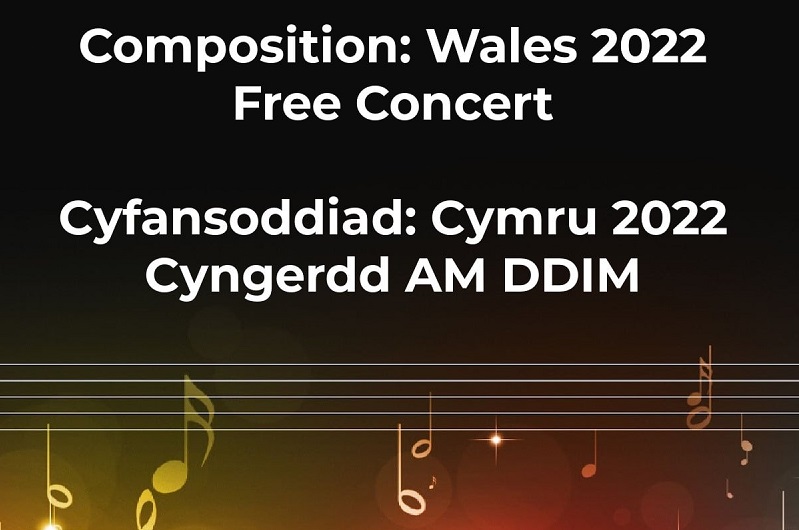 United Kingdom Composition: Wales 2022: BBC National Orchestra of Wales / Ryan Bancroft (composer). Hoddinott Hall, Cardiff Millennium Centre, 10.5.2022. (PCG)
United Kingdom Composition: Wales 2022: BBC National Orchestra of Wales / Ryan Bancroft (composer). Hoddinott Hall, Cardiff Millennium Centre, 10.5.2022. (PCG)

Haldon Evans – Y Mynydd Du
Sam Buttler – Stones have a memory here
Jonathan Guy – Auburn Dusk
Tomos Owen Jones – Daybreak from High House
Natalie Rose – Nexus
Jake Thorpe – Ascension
Jonathan Worsley – Upper Structures
Lenny Sayers – The Imaginary Carnival
I was unable to attend the preliminary workshops for this event. I wondered at first how much time practically would be available for the younger composers to reconsider their scores before they were committed for performance – in fact, how far the educational part of the remit for Composition: Wales could be fulfilled under the circumstances of continuing pandemic regulations. A look at the eight selected scores beforehand gave the impression that some of the composers were yielding to a temptation to play safe. There were none of the experimental scores that have in previous years caused the players unexpected bafflement and uncertainty. Indeed, several of the works had a definite underlying similarity of formal approach.
A piece begins with sustained string chords to which woodwind figurations are slowly added, then leads to a climax for full orchestra followed in turn by a central and livelier interlude before the initial material returns in an abbreviated form. There is nothing at all wrong with this as a formal procedure: many composers over the generations have adopted this model. In the early years of the twentieth century, with the admixture of several imitation or real folk-tunes and the addition of a geographical title, it became almost a fixture in British music; consider such titles as Norfolk Rhapsody, Somerset Rhapsody and Severn Rhapsody. It is a good basic form for a short orchestral piece, although Vaughan Williams, Holst and Finzi – the authors of these examples – tended to allow the musical development to proceed further than the restriction of eight minutes placed on the composers here. Some of the works, in fact, came in at well under that duration, and the thematic material often had insufficient chance to establish itself before it was moved along. The titles too were altered and diverse – none of them actually employed the term ‘rhapsody’ – although several did refer to specific geographical landscapes as sources for their musical inspiration. And, despite the similarities of form, the treatment of these pastoral rhapsodies by the various composers was conspicuously different.
Among these geographical evocations can be included Daybreak from High House by Tomos Owen Jones, Stones have memory here by Sam Buttler and Y Mynydd Du by Haldon Evans, the only representative of the older generation of Welsh composers who studied in Cardiff under Alun Hoddinott. Evans’s piece launched the evening in fine style, and the composer struck just the right self-deprecating note when in a brief chat with the conductor he described himself as a ‘late developer’. But it was not Hoddinott but Bax who appeared to be the principal influence on the composer’s style here, with slightly sinister evocations of ancient castles and a lyrically soaring violin melody which even recalled the music of Samuel Barber. Prominent scoring for the harp firmly established the Welsh context of this depiction of remote landscapes in the Brecon Beacons.
The Brecon Beacons were also given as the location of Daybreak from High House, but the landscape evoked here seemed to be more grandiose and imposing than the gently sloping hills, or even the not so gently sloping climbs, of South Wales. The atmosphere approached that of the Himalayas or the Rockies. Bax’s influence was again significant, and one felt that the castle of Tintagel was never far distant. The idea behind Stones have memory here was somewhat different: that the ground itself, and the buildings, preserved the recollections of their history even when they had been subsumed into some later purpose. The initial musical motive was distinctive enough to make its presence felt through what became in many ways an extended series of variations. They began with an almost Respighi-like catacomb stillness and rose to an elevated beauty with flute and high-flying cello exchanging contrapuntal melodies. The final glorious transfiguration brought an almost Ravellian splendour, an enchanted garden in truth.
Indeed some of the scores here appeared to hanker for the forces of a full romantic orchestra with triple woodwind, such as the BBC National Orchestra of Wales have traditionally wielded for such events. This year, however, one had to consider the legal regulations in force when the advertisement for scores was issued last autumn, the need for continued social distancing during rehearsals, and even fear of the unexpected loss of personnel through illness. That is why the specified orchestra had been reduced to double woodwind, and even only a pair of trombones.
Similar in form but rather different in sound, Autumn Dusk by Jonathan Guy was unusual in this programme. It completely eschewed the use of wind instruments in an orchestra restricted to harp, percussion and strings. The folk elements here were even more prominent, befitting a work written in honour and memory of William Mathias. The percussive elements were at first restricted to coloration of the string writing. After a sudden eruption, the closing pages contained the wistful sounds of the bowed vibraphone surrounding the notes with a halo of resonance.
Somewhat outside the formal structure of pastoral rhapsody, however defined, stood three works with more purely formal titles: Nexus by Natalie Roe, Ascension by Jake Thorpe and Upper Structures by Jonathan Worsley. In her introductory talk with the conductor, Roe said that Nexus described her thoughts and emotions on awakening in the morning. She must lead a life much less stressed than most of us, although one could detect the swirling abstractions of the painting by Faith Hucklesby which the composer also cited as an influence on the music and which was reproduced on the cover of the score.
Ascension was less convincing, sometimes startling in its loud eruptions which seemed to fit much less comfortably with the more evolutionary elements that the title suggests. The piece was also rather short. One felt that the music was left towards the end with nowhere else to go when its climaxes had already been so comprehensively achieved.
Upper structures frankly acknowledged its roots in jazz structures and harmonies, and was the most fully satisfying of the three more abstract pieces on the programme, even when it slipped in a surely unintentional echo of the icefall movement from Sinfonia Antartica during its modal sideslips from one texture to the next.
Finally, and standing rather apart from the other scores, was The Imaginary Carnival by Lenny Sayers. He has become somewhat of a veteran at these events – he plays bass clarinet with the orchestra – and here furnished an extract from a more substantial theatrical work with the enticing title When the Dragons come back to Wales. This was a more wide-ranging orchestral arrangement of music written for chamber ensemble and recorded in 2021. It had the decided element of a ballet suite somewhere in the footsteps of Petrushka with riotous overtones of Prokofiev and even Malcolm Arnold – as well as a richly lyrical violin line that raised echoes of John Williams at his Hollywood brashest. At the end there was a sudden injection (harp and glockenspiel, both marked ffff) as the carnival proceedings were interrupted by the threat of rain, a very Welsh touch, and a quirkily offbeat ending. It was a shame that space could not be found in the programme leaflet for the composer’s full exposition of the score, but the description of the remainder of the plot whets one’s appetite for the rest of the theatrical event. Sayers, an expert orchestrator, handles his players with wit and delicacy where needed, and with an uproarious sense of humour. Surely, we must be given a complete performance of the score in full orchestral dress at some time in the future.
One can easily overlook the role in these workshops and performances of the indefatigable players of the BBC National Orchestra of Wales and their principal conductor Ryan Bancroft, here stepping into the shoes filled in earlier years by Jac van Steen and Tommy Andersson. During their brief introductory talks with the conductor, the composers paid their compliments for the assistance they had received, not only from the performers but also from the mentors Gavin Higgins and Sarah Lianne Lewis who this year had overseen the project. And rightly so. One hopes some of these pieces, unlike so many in earlier years which have fallen by the wayside, may now find their way to repeat performances as part of the orchestra’s regular repertory.
Paul Corfield Godfrey
